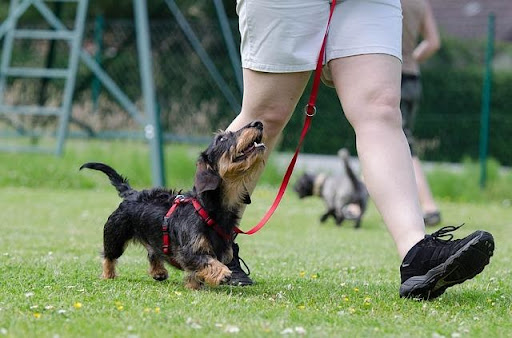
Many times people who have been pet parents for most of their lives often ponder the opportunity to work with dogs as trainers. The kind of love that pet parents hold for animals is like no other.
There is special patience and understanding that naturally leads toward working with animals in a teaching capacity especially if you’ve grown to be successful with training your own dogs without professional help.
When friends and family start to come to you for guidance on training or ask that you work with their pups, it’s a clear indication of skill and experience. It could lead to a career change which for many would be a dream come true spending days in the company of such loving animals.
Let’s look at a few things you should know in order to begin your business – view site for more specific details. It’s not a cut-and-dry process. There are things you need to make yourself aware of.

TIPS ON STARTING A DOG TRAINING BUSINESS
Many pet parents parlay into dog training after years of training their own fur babies. It’s a natural progression after having friends and family requests that you work with their dogs. When you have a natural way with pups and have never worked with a professional, it’s instinctive to consider the opportunity.
There are factors that some potential trainers need to consider since it’s not all about merely working with a pup. You will also interact with other pet parents helping them on their journey to learning how to get their canines to listen when they speak.
It’s not a solo process. Pet parents are an essential part of the program since the dog will ultimately need to take commands from them. Let’s look at what will make a successful professional.
- Communication
Aside from working with friendly pooches, dog trainers work with people teaching them how to train their fur babies. You supply the foundation the pet parent will need to carry with them for using the methods in the home environment.
That means the communication needs to be clear and easily understood for each individual. Communication works by listening to what others have to say in the way not only of the pet’s parents but the dogs themselves.
Parents might have much to say about a pup’s behavior. It all needs taking into consideration with a “hearing” ear and concerns need addressing. The best customer service is a priority as far as people and pets feel.

- Read the canine’s behavior
Part of the training is the ability to translate what the dog is indicating with body language and understanding behavioral indicators. Body language can be misread and appear mysterious if you’re not in tune. If a dog “smiles” he could sincerely be stressed or scared instead of happy.
Before working in the training profession, it’s wise to research the varied behaviors and what body language can mean. Understanding when a dog is suffering from anxiety with the likelihood of lashing out is valuable to a new dog trainer.
- Patience is key in this type of business.
When pups feel anxious or afraid, there is the possibility of lashing out or even biting, a trainer needs to be patient through these instances to walk a puppy through their anxiety.
You will also experience pet parents who might become impatient if they believe the training is not progressing as quickly as they imagined. The process is difficult and challenging with sufficient time, effort, and energy necessary and each person involved needs to understand.
That means explaining this kindly and as often as possible from the first day along with the fact that each dog is unique and will learn in their own way at their own speed. Doing so can help stave off unrealistic thought processes.

- Hands-on experience with pets of your own.
The ease of getting a training certificate online without the need for experience is unfortunate since dogs and pet parents require much more than that. Someone who has actually worked with pups, more so lived with canines and trained them, is critical to being able to do so with other people’s animals. And genuinely, would you expect any less from a trainer working with your dog?
Even with these experiences, before accepting clients, it’s wise to practice some of the techniques with close friends’ pets, family, or your puppy. Working with varied dogs of different breeds with unique personalities will mean educating with a school that asks their enrollees to complete a set hour-program involving dogs from a shelter. Look here for details on professional dog training.
FINAL THOUGHT
Most people turning to dog training as a career do so because they have a genuine love for these animals. The thing to remember when you turn it into a business is that you need to make sure you keep having fun even though it’s now your “job.”
Pet parents want their dogs to have a good time while learning with someone who has a positive, cheerful attitude and it should make you feel good to know you’re making a difference for the parents and the pups.
It isn’t always going to be easy, mostly it will be satisfying; but when you face challenges, it’s essential to remember that you’re teaching this dog and his parents how to come together as a family with your methods – so worth it.
